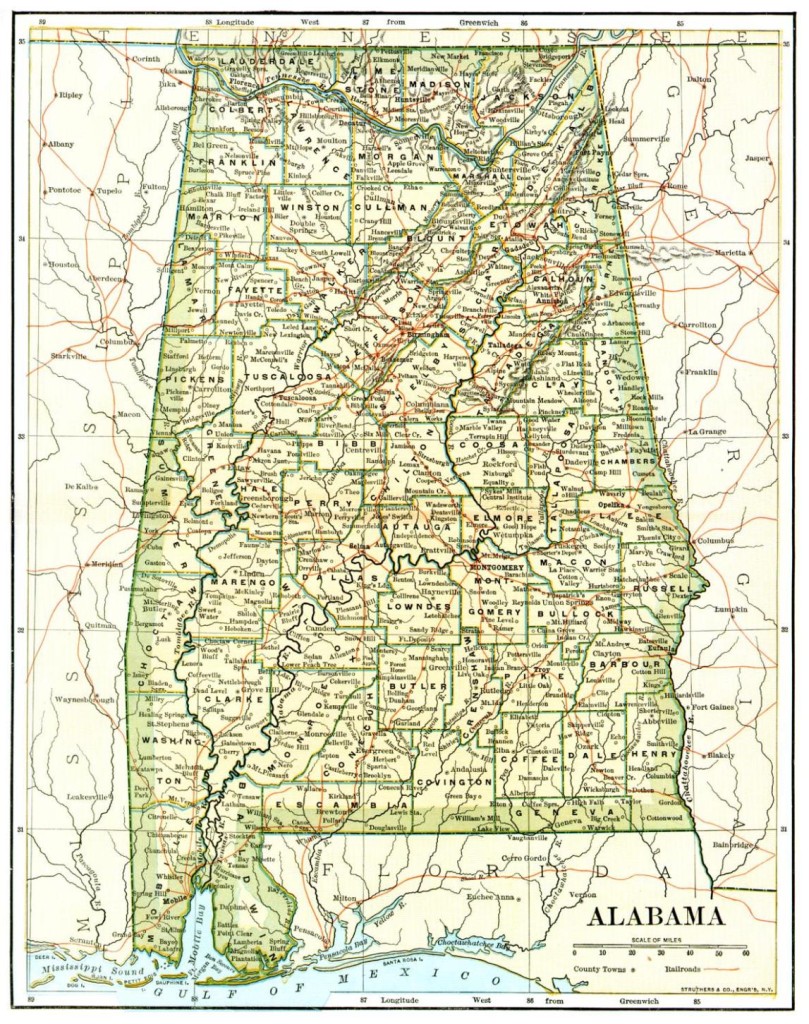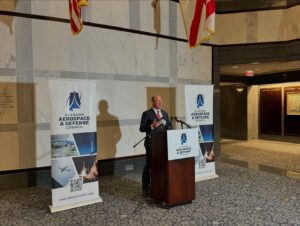Paul DeMarco: Alabama legislature further erodes confidence of public in redistricting process

This past week the Alabama Legislature concluded its special session called by Governor Kay Ivey to address the once every ten-year reapportionment of Alabama’s legislative, School Board, and Congressional districts. And unfortunately, it created another black eye for the lawmakers and the way some conduct business. Over the past four years, there have been instances when some members of this body of state representatives and senators earned the reputation for ramming through legislation without the transparency the public is owed by its elected officials. Even when the rest of the state opened up during the pandemic, the statehouse had remained hard to access to the public, and our ability to watch bills being debated and considered was diminished, which makes the way maps were passed and the response of those in charge of drawing them even more frustrating. After months of lobbyists, and those paying for the lobbyist, drawing maps in secret, our maps for the next decade were approved despite the fact they were not released for the public until hours before they were voted on by the reapportionment committee. Maps then were passed without any changes requested by the public or some fellow members. Repeated requests from constituents across the state, as well as from some members of the legislature, were flippantly dismissed by reapportionment leaders based solely on the scare tactics that any changes would immediately lead to lawsuits and that there was not enough time to debate changes despite months of maps being drawn in secret and revealed at the last minute. Of course, these arguments were hollow, as numerous maps were able to be proposed and viewed instantaneously with the same transparency as those proposed from insiders, and of course, within days of passage, lawsuits have already been filed. Poll after poll indicates that American’s have never had less trust in government than they do now. The hard part of governing is allowing feedback, hearing multiple sides, and being willing to change your mind. The Alabama redistricting process sadly showed how little regard some leaders have for Alabama citizens and why time and time again, voters choose change. In districts drawn of their choosing, Alabama elected officials will be up for election next year. Call after call to leaders of the Reapportionment committee and some elected leaders were received with dismissiveness, disdain, and a charge to “reach out to your own member.” Elections are our chance to do just that. Paul DeMarco is a former member of the Alabama House of Representatives.
Redistricting reforms already taking root in many states

While ruling that it had no authority to resolve partisan gerrymandering claims, the U.S. Supreme Court noted Thursday that states could act on their own to try to limit the role of politics in drawing congressional and state legislative districts. Several states already have done so, including some where voters adopted constitutional amendments last year. In most places, state lawmakers and governors are responsible for drawing and approving political district maps following each U.S. Census. But a growing number of states have shifted the task to independent or bipartisan commissions or have changed their redistricting criteria to reduce the likelihood of partisan gerrymandering. Here are some of the states using commissions or other nontraditional methods for the next round of redistricting, which will take place after the 2020 Census. ALASKA: A five-member commission draws districts for the state House and Senate under a 1998 amendment to the state constitution. Two members are appointed by the governor and one each by the presiding officers of the House and Senate and the chief justice of the Supreme Court. Districts must be compact, contiguous and contain “a relatively integrated socio-economic area.” Alaska has only one congressional district. ARIZONA: Congressional and state legislative districts are drawn by a five-member commission established under a ballot measure approved by voters in 2000. Twenty-five potential redistricting commissioners are nominated by the same state panel that handles appeals court nominees. The Legislature’s two Republican leaders choose two commissioners from 10 Republican candidates, and the two Democratic leaders chose two from their party’s 10 nominees. Those four commissioners then select the fifth member, who must be an independent and serves as panel chairman. The constitution says “competitive districts” should be drawn as long as that doesn’t detract from the goals of having compact, contiguous districts that respect communities of interest. Democrats have accused Gov. Doug Ducey, a Republican, of influencing the commission’s composition by stacking the appellate court panel that narrows the field of potential candidates. The panel has eight Republicans and five independents, but no Democrats. CALIFORNIA: Voters approved a pair of ballot measures, in 2008 and 2010, creating a 14-member commission to draw congressional and state legislative districts. A state auditor’s panel takes applications and selects 60 potential redistricting commissioners — 20 Democrats, 20 Republicans and 20 others. The state Assembly and Senate majority and minority leaders each can eliminate two nominees from each political category. Eight redistricting commissioners — three Democrats, three Republicans and two unaffiliated members — are randomly selected from the remaining pool of candidates. Those commissioners then select an additional two Democrats, two Republicans and two unaffiliated members. Approving a map requires nine votes, including three from each political category of members. The constitution says the districts should be compact and keep cities, counties and communities of interest together to the extent possible. COLORADO: Congressional and state legislative districts will be drawn by a 12-member commission, under a pair of constitutional amendments approved by voters last November. The commission will consist of four Republicans, four Democrats and four independents selected from a pool of applicants. Half will be chosen randomly and the rest by a judicial panel. Nonpartisan legislative staff will draft proposed maps for the commission’s approval; maps will require at least eight votes, including two from independents. The state Supreme Court will then review the maps to determine whether legal criteria were followed. The districts must be compact, preserve communities of interest and “maximize the number of politically competitive districts.” HAWAII: Congressional and state legislative districts are drawn by a nine-member commission. The majority and minority party leaders in the House and Senate each appoint two commissioners. Those eight then pick a ninth commissioner. If they can’t agree, the ninth member is appointed by the state Supreme Court. Districts cannot be drawn to “unduly favor a person or political faction.” IDAHO: A six-member commission is responsible for drawing both congressional and state legislative districts. Two-thirds of the commissioners must vote to approve a map. The majority and minority party leaders in each legislative chamber each select one person to serve on the commission; the state chairmen of the Republican and Democratic parties also each select a commissioner. Mapmakers should avoid “oddly shaped” districts and preserve “traditional neighborhoods and local communities of interest.” IOWA: The nonpartisan Legislative Services Agency draws maps for congressional and state legislative districts, which are submitted to the Legislature for approval. Districts must consist of “convenient contiguous territory” and be reasonably compact. Districts cannot be drawn to favor a political party, incumbent or other person or group. MICHIGAN: Under a constitutional amendment approved by voters last November, congressional and state legislative districts will be drawn by a 13-member citizens’ commission. It will consist of four Democrats, four Republicans and five independents randomly selected by the secretary of state from among applicants. Approval of districts will require a majority vote with support of at least two Democrats, two Republicans and two independents. If that fails, each commissioner would submit a plan and rank their options by preference, with the highest-ranked plan prevailing. In case of a tie, the secretary of state would randomly select the final plan. Districts must be compact, contiguous, limit splitting of counties and cities, “reflect the state’s diverse population and communities of interest,” not favor or disfavor incumbents, and not provide a disproportionate advantage to any political party. MISSOURI: A constitutional amendment approved by voters last November will require a new nonpartisan state demographer to draft maps for state House and Senate districts. The demographer is to design districts to achieve “partisan fairness” and “competitiveness” as determined by statistical measurements using the results of previous elections. Districts also shall be contiguous and limit splits among counties and cities. Compact districts are preferred but rank last among the criteria. The maps will be submitted to a pair of existing bipartisan commissions for approval. The governor will appoint a 10-member commission for the Senate districts, choosing five Republicans and five Democrats from among nominees submitted by
Census, redistricting top remaining Supreme Court cases

The Supreme Court enters its final week of decisions with two politically charged issues unresolved, whether to rein in political line-drawing for partisan gain and allow a citizenship question on the 2020 census. Both decisions could affect the distribution of political power for the next decade, and both also may test Chief Justice John Roberts’ professed desire to keep his court of five conservatives appointed by Republican presidents and four liberals appointed by Democrats from looking like the other, elected branches of government. Decisions that break along the court’s political and ideological divide are more likely to generate criticism of the court as yet another political institution. In addition, the justices could say as early as Monday whether they will add to their election-year calendar a test of President Donald Trump’s effort to end an Obama-era program that shields young immigrants from deportation. The court’s new term begins in October. Twelve cases that were argued between November and April remain to be decided. They include disputes over: a trademark sought by the FUCT clothing line, control of a large swatch of eastern Oklahoma that once belonged to Indian tribes and when courts should defer to decisions made by executive branch agencies. But the biggest cases by far involve the citizenship question the Trump administration wants to add to the census and two cases in which lower courts found that Republicans in North Carolina and Democrats in Maryland went too far in drawing congressional districts to benefit their party at the expense of the other party’s voters. The Supreme Court has never invalidated districts on partisan grounds, but the court has kept the door open to these claims. The court has struck down districts predominantly based on race. Now though the justices are considering whether to rule out federal lawsuits making claims of partisan gerrymandering. Conversely, the court also could impose limits on the practice for the first time. It was not clear at arguments in March that any conservative justices were prepared to join the liberals to limit partisan gerrymandering. In the census case, the Census Bureau’s own experts say that Hispanics and other immigrants are likely to be undercounted if the census questionnaire asks everyone about their citizenship status. The last time the question appeared on the once-a-decade census was in 1950, and even then it wasn’t asked of everyone. Democratic-led states and cities, and civil rights groups challenging the citizenship case, have argued that the question would take power away from cities and other places with large immigrant populations and reward less populated rural areas. They have more recently pointed to newly discovered evidence on the computer files of a now-dead Republican consultant that they say shows the citizenship question is part of a broader plan to increase Republican power. The administration has said the new allegations lack merit. When the case was argued in April, it appeared that the conservative justices were poised to allow the question to be asked. Census results determine how seats in the House of Representatives are allocated among the 50 states and how billions of dollars in federal money is distributed. The population count also forms the basis for the redrawing of districts from Congress to local governments that takes place every 10 years. The court’s decisions in the redistricting cases will affect the tools state lawmakers can use to draw those districts, especially in states in which one party controls the governor’s office and both houses of the state legislature. Republican successes in the 2010 election cycle left them completely in charge of the process in such states as Michigan, North Carolina, Ohio and Wisconsin. In all four states, Democratic voters sued over congressional or legislative districts, and federal courts determined that the districts violated those voters’ constitutional rights. Democrats controlled the process in Maryland, where they successfully reshaped one district to pry it from longtime Republican control. Once the court’s work is done for the summer, the justices typically leave town to teach and travel. Justice Brett Kavanaugh will teach a course on the origins of the U.S. Constitution for George Mason University’s summer program in England, near where the Magna Carta was sealed 800 years ago. By Mark Sherman Associated Press Republished with the permission of the Associated Press.
Judge: Alabama won’t be ordered to redistrict before 2020

A federal judge says a lawsuit challenging Alabama’s congressional districts will go forward, but the state can’t be forced to redraw lines before 2020. U.S. District Judge Karon Bowdre issued the decision Wednesday. Eight African-American voters filed the 2018 voting rights lawsuit contending the state illegally packs minority voters into a single congressional district. The lawsuit contends Alabama should have two majority-minority districts. Citing a delay in filing the lawsuit, Bowdre said Alabama would be harmed if it is forced to redistrict twice in two years. However, Bowdre said if the current map is ruled unconstitutional, Alabama couldn’t use it as the basis for drawing new lines in 2021. Attorney General Steve Marshall says he was pleased the judge agreed plaintiffs “waited too long to file their legal challenge.” Republished with permission from the Associated Press.
Lawsuits claim Congressional maps dilutes black voters in Alabama, Georgia, Louisiana

A group backed by Democratic former U.S. Attorney General Eric Holder launched a legal campaign Wednesday in an effort to create more black congressional districts in three Southern states: Alabama, Georgia and Louisiana. The group, the National Redistricting Foundation, claims the current congressional maps violate a section of the Voting Rights Act by discriminating against black voters by not allowing them an equal opportunity to elect candidates of their choice to the U.S. House of Representatives. They seek to block the three states from holding any further congressional elections under the current maps that were approved in 2011. Alabama 7th District U.S. Rep. Terri Sewell, who represents the state’s only majority-minority congressional district, applauded the lawsuits. “I applaud today’s effort by the National Redistricting Foundation to challenge the underrepresentation of African American voters in Alabama,” said Sewell. “Generations of Alabamians have fought tirelessly for equal voting rights, and I support all efforts to guarantee fair representation and access to the polls. More than fifty years after the enactment of the Voting Rights Act of 1965, our work to prevent voter discrimination and unfair electoral practices is not over. Our vote is our voice, and protecting the vote for all Americans must remain a top priority.”
Key redistricting case goes in front of The Supreme Court

The Supreme Court has already heard a major case about political line-drawing that has the potential to reshape American politics. Now, before even deciding that one, the court is taking up another similar case. The arguments justices will hear Wednesday in the second case, a Republican challenge to a Democratic-leaning congressional district in Maryland, could offer fresh clues to what they are thinking about partisan gerrymandering, an increasingly hot topic before courts. Decisions in the Maryland case and the earlier one from Wisconsin are expected by late June. The arguments come nearly six months after the court heard a dispute over Wisconsin legislative districts that Democrats claim were drawn to maximize Republican control in a state that is closely divided between the parties. The Supreme Court has never thrown out electoral districts on partisan grounds and it’s not clear the justices will do so now. But supporters of limits on partisanship in redistricting are encouraged that the justices are considering two cases. “In taking these two cases, the Supreme Court wants to say something about partisan gerrymandering. It’s clear the Supreme Court is not walking away from the issue,” said Michael Li, senior counsel at the New York University law school’s Brennan Center for Justice. The justices’ involvement in partisan redistricting reflects a period of unusual activity in the courts on this topic. Over the past 16 months, courts struck down political districting plans drawn by Republicans in North Carolina, Pennsylvania and Wisconsin. Federal judges threw out a state legislative map in Wisconsin and a congressional plan in North Carolina. In Pennsylvania, the state Supreme Court invalidated the state’s congressional districts and replaced them with a court-drawn plan. When the Supreme Court heard Wisconsin’s appeal, the court appeared to be split along familiar lines. Four liberal justices seemed inclined to strike down the legislative map and four conservatives appeared more favorable to it. That left Justice Anthony Kennedy seemingly in control of the outcome. A relatively quick resolution of the case also appeared likely, based on the way the court handled the case. A lower court had earlier struck down the districts and ordered new ones drawn. The justices blocked the drawing of a new map last summer, but set the case for arguments in the first week of its new term in October. Then in December, the court said it would hear the case about Maryland’s 6th congressional district, but provided no further explanation about why it was adding a second redistricting case. Democrats who controlled redistricting in Maryland in 2011 made a conscious decision to try to increase the party’s control of congressional districts from 6-2 to 7-1, said Michael Kimberly, the lawyer representing the Republican challengers. They took a district that had been centered in rural, Republican-leaning northwestern Maryland, where a longtime Republican incumbent won by 28 percentage points in 2010 and turned it into a district that took in some Democratic Washington, D.C., suburbs and elected a Democrat who won by 21 percentage points in 2012. The change violated the First Amendment rights of the Republican voters, Kimberly said. Maryland Attorney General Brian Frosh, a Democrat, said in defending the district that it is competitive for both parties and has elected a moderate Democrat. In 2014, a friendlier year for Republican candidates, Democratic Rep. John Delaney’s victory margin dropped to less than 2 points, though it rose again in 2016. In some ways, the Wisconsin and Maryland cases complement each other. In Wisconsin, the justices have a broad theory about partisan line-drawing. The lower court that ruled for the Democratic challengers concluded that the districting plans were drawn to discriminate against Democrats, the Republicans’ advantage would endure even in the face of a strong Democratic showing at the polls and the plans could not be explained by other, non-partisan reasons. In Maryland, the single-district approach looks a lot like the way civil rights groups try to prove that race played too large a role in the drawing of districts. It would be both a more limited approach than the Wisconsin case, but also feel more familiar to justices who have decided many claims of racial bias in redistricting. With two cases before them, the justices now have one in which each party is complaining about the other. That could be significant based on Chief Justice John Roberts’ stated distaste for putting the court’s credibility at stake in politically charged cases. “We’ll have to decide in every case whether the Democrats win or the Republicans win,” Roberts said in the Wisconsin arguments. Another possibility is that the justices could already have decided that there’s a procedural problem in the Wisconsin case, limiting their ability to address the merits of the Democratic voters’ claim. However the court views the two cases, it seems increasingly likely that a decision striking down districts won’t result in any changes this year. The court frowns on making these sorts of changes so close to an election. The deadline to get on the primary ballot in Wisconsin is June 1. Maryland’s deadline was last month. The court also has blocked new congressional districts in North Carolina. Only in Pennsylvania, where the state Supreme Court invoked the state constitution to strike down the congressional map, has a new map been put in place. The Supreme Court refused an emergency request from Pennsylvania Republicans to block it. Republished with the permission of the Associated Press.
Supreme Court takes up key case about partisan redistricting

The Supreme Court is taking up a case about political maps in Wisconsin that could affect elections across the country. The justices are hearing arguments Tuesday in a dispute between Democratic voters and Wisconsin Republicans who drew maps that have entrenched their control of the legislature in a state that is otherwise closely divided between the parties. The Democratic challengers are asking the court to declare for the first time that the inherently political process of redistricting can be too partisan. Republicans contend that courts have no business in decisions that should be left to the political branches of government. Courts have struck down districts as racially biased for decades, and other partisan districting lawsuits are moving through the courts in Maryland and North Carolina. The outcome in the Wisconsin case probably rests with Justice Anthony Kennedy. He wrote in 2004 that he had yet to be shown a good way to measure and manage excessively partisan districts. “If workable standards do emerge to measure these burdens, however, courts should be prepared to order relief,” Kennedy wrote in a redistricting case from Pennsylvania, Vieth v. Jubilirer. Paul Smith, the same lawyer who failed to get Kennedy’s vote and thus a majority 13 years ago, is again urging the court to rein in partisan gerrymandering, or drawing districts for partisan gain. This time, Smith said in representing the Wisconsin voters, there are good ways to measure when one party gives itself an unfair edge in creating districts. In Wisconsin, a lower court sifted through evidence showing that Republicans packed Democrats into some districts and spread them out across others to maximize gains for the GOP. In one analysis, Democrats captured far fewer state Assembly seats even when they won roughly the same percentage of the statewide vote as Republicans. The lower court concluded that the districting plans were drawn to discriminate against Democrats, the Republicans’ advantage would endure even in the face of a strong Democratic showing at the polls and the plans could not be explained by other, non-partisan reasons. The state is arguing the justices should put an end to courts’ consideration of partisanship in districting plans and cautioning that far from being manageable, a ruling for the Democratic voters would open the door to a flood of lawsuits that would be based on cherry-picked evidence and hard for judges to manage. The court said it will not provide live audio of the highly anticipated argument, despite a request from several members of Congress to Chief Justice John Roberts. Republished with permission from the Associated Press.
Lawmakers submit new legislative maps to court

Alabama lawmakers have submitted new legislative districts lines to a federal court after being ordered to correct racial gerrymandering. Lawmakers last week submitted the new districts to the three-judge panel. The panel in January struck down 12 districts, saying Republicans had overly relied on race to draw lines. Judges said new lines must be drawn by the 2018 elections. The GOP-controlled Legislature approved the map last month over the objections of black Democrats whose lawsuit led to the redistricting order. The Legislative Black Caucus in the 2012 lawsuit argued African-American voters had been “stacked and packed” into designated minority districts to make neighboring districts whiter and more Republican. Republicans say the new plan corrects the problems found by the court. Black Democrats argued Republicans made minimal changes. Republished with permission of The Associated Press.
Controversial redistricting plans approved by state legislature in final hours of session

Despite objections, in the final 24 hours of the legislative session Alabama lawmakers approved controversial plans to draw new state district lines for voters. The Legislature was tasked with drawing new district plans following a January decision from a three-judge federal court, which found the Legislature improperly used race as the primary factor in drawing nine House districts and three Senate districts in 2012. The court ruled the 12 districts in question could not be used in the 2018 elections. Tweaking the lines of those 12 districts affected other districts across the state, which democratic members of the Black Caucus claimed continued the state’s history of racial gerrymandering in order to maintain Republican dominance. Nevertheless, after Democrats in both chambers tried to stall the votes and asked for the bill to be read aloud once more – a process that took more than 30 hours of combined reading time – the chambers voted and passed the new plans. Representatives approved the Senate districts plans in a 71-32 party line vote on Thursday night after the reading was finished. Meanwhile, state senators waited through the marathon reading of the 541-page bill before they voted, 21 to 8, Friday afternoon to approve the new House district lines. Both plans now head to Gov. Kay Ivey‘s desk for her signature. If she signs off on them, they will also be subject to federal court approval.
Alabama Democrats stall vote on redistricting bill

House Democrats are working hard to stall a vote on a plan to redraw the state’s legislative districts, saying the latest plan is still unfairly based on race. The Legislature was tasked with drawing new district plans following a January decision from a three-judge federal court found the Legislature improperly used race as the primary factor in drawing nine House districts and three Senate districts in 2012. The court ruled the 12 districts in question could not be used in the 2018 elections. Tweaking the lines of those 12 districts affected the other 13 districts across the state. Late Tuesday night, members of the House Democratic Caucus delayed a vote on the new plans until Thursday when Thomasville-Democrat Rep. Thomas Jackson asked for the 539-page bill to be read aloud by an automated voice-reader. The reading is estimated to take approximately 13 hours and resumed Thursday when the Legislature came back into session. The House Democratic Caucus took to Facebook on Thursday to express their disapproval of the plans. Folks, this entire reapportionment process has been yet another example of cloak and dagger politics. The committee meetings were thrown together at the last moment, the “public hearing” was anything but public, and on top of it all, the plan that was debated in committee isn’t the plan that was on the floor yesterday. Republicans drew a midnight substitute for the reapportionment plan, meaning that the plan on the floor yesterday was never discussed, analyzed, or debated in committee. Our members didn’t get the midnight substitute until the day the plan went to the floor despite the fact that all 12 districts that were ruled unconstitutional are OUR districts. Not only is this proposed plan unconstitutional because it continues racial gerrymandering, but the entire process has taken place in secret under a cloud of smoke and crookedness. After a Governor, Chief Justice, and Speaker of the House being removed from office in the past year, Republicans still have not learned their lesson– that cloak and dagger politics have no place in our system. The GOP-led House say they have enough votes to pass the measure, but Democrats say they will plan to continue to delay a vote as long as possible. The redistricting plan will be subject to federal court approval.
Senate approves plan to redraw 25 districts, despite Dems objections

The Alabama Senate approved 25 new legislative districts on Thursday. The planned passed 25-7, after lengthy debate where Black Caucus Democrats objected and required the bill to be fully read. “It has smidgens of Jim Crow,” Birmingham-Democrat Sen. Rodger Smitherman said of the new plans which greatly affect Jefferson County. According to Smitherman, Republicans would maintain control of Jefferson County, home to the majority black city of Birmingham, which is precisely why the maps needed to be redrawn in the first place. But Chairman of the Legislative Reapportionment Committee, Lineville-Republican, Sen. Gerald Dial disagrees. “We have a plan we think we can fully support through the legal process,” Dial said. The Legislature was tasked with drawing new district plans following a January decision from a three-judge federal court found the Legislature improperly used race as the primary factor in drawing nine House districts and three Senate districts in 2012. The court ruled the 12 districts in question could not be used in the 2018 elections. Tweaking the lines of those 12 districts affected the other 13 districts across the state. The plans move to the House for consideration, which could come as early as Tuesday.
Legislative committee approves redistricting plan

An Alabama House committee approved new legislative districts late Tuesday night. The House Constitution, Campaigns and Election Committee voted along party lines to send the plan to the House floor, despite objections from democratic members of the Black Caucus who claim the new plan continues the state’s history of racial gerrymandering in order to maintain Republican dominance. The Legislature is tasked with drawing new district plans following a January decision from a three-judge federal court found the Legislature improperly used race as the primary factor in drawing nine House districts and three Senate districts in 2012. The court ruled the 12 districts in question could not be used in the 2018 elections. Tweaking the lines of those 12 districts will affect other districts across the state. Daphne-Republican, Committee Chairman Randy Davis said lawmakers worked carefully to both comply with the court ruling and be fair in creating the new maps.


